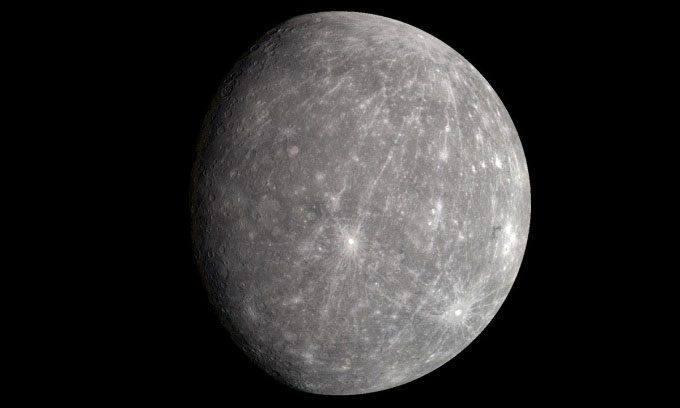In the 19th century, astronomers calculated the existence of a planet in the solar system and named it Vulcan, though no one had actually observed it.
Centuries ago, scientists noticed that the orbit of Uranus differed slightly from predictions based on Newton’s gravitational theory. In July 1846, French astronomer and mathematician Urbain Le Verrier suggested that this discrepancy could be explained by the presence of another planet and made predictions about the orbit of this unknown celestial body.

Mercury, the planet closest to the Sun. (Image: NASA)
Le Verrier was not particularly interested in discovering a new planet through telescopic observation, as he had already identified it mathematically. The task of observation was assigned to German astronomer Johann Gottfried Galle. On September 23, 1846, Galle looked at the position where Le Verrier predicted the new planet would be. However, to his surprise, Galle did not see this mysterious planet but instead discovered Neptune within one degree of that position.
Subsequently, Le Verrier was asked to observe another planet, Mercury. Being too close to the Sun, Mercury is one of the most challenging planets to observe in the solar system. Le Verrier was tasked with applying Newton’s physical theories to determine the orbit of this planet.
However, Le Verrier was unsuccessful. Despite his efforts, Mercury’s eccentric orbit caused confusion. According to Newton’s theory, planets move in elliptical orbits around the Sun, but observations indicated that Mercury’s orbit fluctuated more than could be explained by the gravitational influence of known planets.
Similar to his work with Uranus, Le Verrier believed that the cause was another planet altering Mercury’s path. Eventually, he named this mysterious planet Vulcan, after the Roman god of fire.
Not long after, astronomers began reporting observations of Vulcan. The first report came from amateur astronomer Edmond Modeste on March 26, 1859. Based on Modeste’s observations, Le Verrier calculated the orbit of the new planet. He believed that it would transit (when a planet passes directly between a star and an observer, as when Mercury passes between the Sun and Earth) 2 to 4 times each year.
Le Verrier refined his calculations based on other observations, but Vulcan was never conclusively observed. Many observations attributed to this planet could be explained by sunspots, known planets, and nearby stars.
Despite this, Vulcan persisted in scientific discussions for 70 years. In 1879, the media even reported that Vulcan would transit across the front of the Sun based on calculations by astronomer Theodor von Oppolzer. However, no one ever saw this planet. People searched for it during most solar eclipses around that time but did not observe it.
Ultimately, the planet born from Le Verrier’s mathematics was “erased” by a new physical theory: General Relativity. Einstein’s theory could predict Mercury’s path without requiring any additional planets to influence it.
General Relativity posits that gravity is a result of the curvature of spacetime caused by massive objects; those close to a massive object will be more affected. Thus, this theory can explain the fluctuations in Mercury’s orbit, the planet closest to the Sun. The outer planets of the solar system are less affected due to their greater distance from the Sun.
Therefore, Einstein’s theory could explain the orbits of Mercury, Earth, Mars, Jupiter, and many other planets without invoking the existence of another planet. The emergence of this new theory also rendered Vulcan a thing of the past.
- Discovery of a giant “egg” by the riverbank, a couple receives unexpected news when reporting to authorities
- Why did the U.S. spend $450 million to remove 4 dams on the river that is the ‘home’ of salmon?
- Having flown into space and even seen unidentified objects, what do astronauts really think about UFOs?


















































